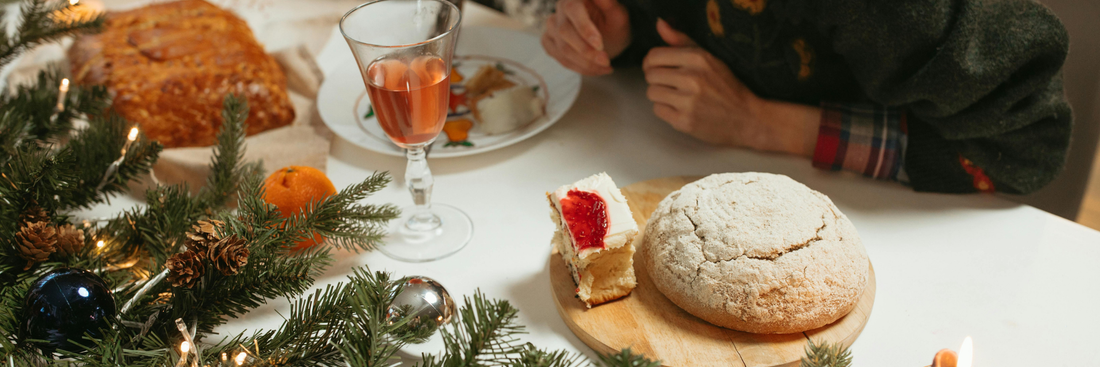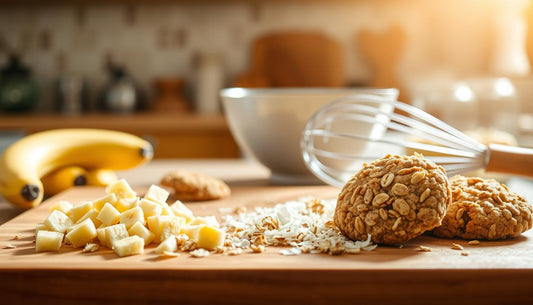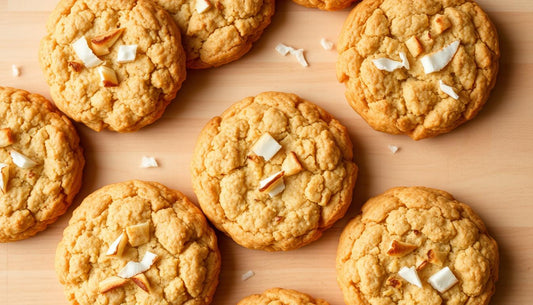Imagine a warm slice of apple pie flakey crust, tender apples, a hint of cinnamon and nutmeg, a touch of ginger or vanilla and now imagine that flavour in a glass. That’s the promise of Apple Pie Wine: a wine or wine-inspired dessert drink that evokes the nostalgic comfort of baked apple pie while delivering the sophistication of a fine beverage. Whether you’re a home baker, a café or a gift-box creator, this concept opens up exciting opportunities both for flavour and packaging.
- How to Pair Sweet Wine with Cheese
- Best Wine Regions in Canada: A Guide for Wine Enthusiasts
- Guide to Classifications and Popular Types of Wine
What Is Apple Pie Wine?

When you hear “apple pie wine”, it can mean a few different but related things:
- A fruit wine (or apple-wine) that uses apples as the primary fruit, often finished with spice notes that mimic apple pie: baked apple, brown sugar, cinnamon, nutmeg, maybe vanilla or caramel.
- A wine-style product (or spiced wine) specifically crafted to evoke the flavour of apple pie, sometimes marketed as a novelty dessert wine.
- A pairing concept: you take actual apple pie (or a dessert inspired by apple pie) and serve it alongside a wine that mirrors those flavours to heighten the experience.
For your business or site, the third option is especially valuable: offering a reliable apple-pie dessert plus a matching wine (or dessert drink), beautifully packaged together, gives you both flavour and presentation advantages.
For example, you might pair a slice of apple pie with a glass of dessert wine, present them inside a windowed kraft pie-box style package, tie it with a ribbon, it becomes a premium holiday gift or catered dessert kit.
And of course, if you’re packaging for takeaway or delivery, the right box matters. Choosing a solid, eco-friendly box that shows the dessert and protects it in transit is key.
Why Apple Pie Wine Works
Emotional resonance
Apple pie is one of the most widely loved desserts: nostalgic, wholesome, comforting. When you translate that into a beverage or coupling, you tap into those same emotions. People remember grandma’s pie, holiday dinners, warm kitchens. That emotional connection gives your product or pairing an edge.
Flavor synergy
From a flavour standpoint: apples (especially when baked) develop sweet, tart, aromatic notes. When you add spices cinnamon, nutmeg, ginger, vanilla, you create the “pie profile”. A beverage that mimics or complements that profile works well. If the wine or drink is too dry or the flavours are off, the connection is lost.
Packaging & presentation premium
When you offer something beyond a standard product e.g., a dessert-wine pairing, gift set, or well-packaged takeaway, you are adding perceived value. Using premium packaging (windowed boxes, inserts, clean branded design) elevates your offering. That’s a space where your packaging supplies become a real asset. For example, you might use a windowed kraft cake box to hold the pie or dessert, and present the wine alongside. A well-packaged dessert + drink set says “gift” or “special occasion” rather than “just another order”.
Check our product: Kraft Paper Cake Box with Window, perfect for packaging pies or dessert-wine combos.
Choosing the Right Wine Style for Apple Pie Wine

Whether you’re making the wine yourself, sourcing it, or simply selecting a wine to pair, here’s how to choose smartly.
Base wine or fruit wine?
- A fruit-wine made primarily from apples is closest to the apple pie experience. These wines often carry baked apple, brown sugar, spice notes.
- If you use a grape wine, you’ll want one with sweetness, aromatics and gentle spice/vanilla/wood influence so it doesn’t clash.
Sweetness matters
Dessert wine levels or moderately sweet wines work best. If your wine is very dry and you pair it with a sweet apple-pie dessert, the dessert will dominate and the wine will taste harsh. Always match or exceed the dessert sweetness.
Spice and aromatics
Look for or infuse wines with spice notes: cinnamon, nutmeg, ginger, vanilla, caramel. These echo the pie profile. For example, a wine aged with vanilla pods or infused with cinnamon sticks can resonate well.
Texture and alcohol
Lower-to-moderate alcohol (8-12%) often works better for dessert wines or apple-pie style wines. High alcohol can disrupt balance. Texture matters a wine that’s too light may feel thin when paired with a rich dessert; one that’s too heavy might overpower. Mid-weight, smooth, with some sweetness and aromatic lift, is ideal.
Packaging and context
If you’re presenting the wine alongside a dessert or in a gift box, the bottle label design, size, and packaging harmony matter. A cohesive gift set with dessert + wine + packaging delivers far more value than a generic bottle.
Selecting the Right Apples & Spices to Create the “Pie” Profile
To produce or pair apple-pie style wine (or dessert) you’ll want to understand how apples and spices contribute to the flavour.
Apple varieties
For baking or pressing into wine, choose apples that hold structure or deliver strong flavour when baked/fermented:
- Granny Smith: tart, crisp, reliable.
- Honeycrisp: fragrant, balanced sweetness.
- Braeburn / Jonagold: deeper flavour profile, more complexity.
Blend a tart apple (structure) with a sweeter aromatic apple for nuance.
Spices & additional flavour cues
In an apple pie, typical spices include: cinnamon, nutmeg, sometimes ginger, vanilla, brown sugar or caramel. Translating to wine:
- Cinnamon: warm, spicy but not hot.
- Nutmeg: aromatic and subtle.
- Ginger: adds lift and brightness (good if you want a “warm but fresh” finish).
- Vanilla: smooth, dessert-wine style.
- Brown sugar/caramel: suggests baked or caramelised apples.
In your content or packaging, you might emphasise how your dessert-wine pairing features “baked apple with cinnamon and ginger finish” or similarly flavour-rich description to connect with customer expectations.
How to Serve, Pair Apple Pie Wine
Serving suggestions
- Chill the wine lightly (around 8-10 °C / 46-50 °F) for fruit dessert wines.
- For a cozy presentation, you may warm the wine gently (in a bain-marie or lined crock pot) to around 40-45 °C with a cinnamon stick giving a “warm apple pie in a glass” feel.
- Serve in a small dessert wine glass or stemmed glass so aromas concentrate.
Pairing ideas
- Serve alongside a slice of actual apple pie (or apple-spice dessert) to create synergy: the wine echoes what you’re eating.
- Alternatively, serve with something contrasting: e.g., a simple vanilla panna cotta with apple-wine sauce, the wine offsets the simple dessert.
- If you’re packaging dessert + wine, include a short pairing note: “Chill wine to 8 °C; serve with warmed apple pie or decadent apple pie truffles”.
Common Mistakes & How to Avoid Them

When dealing with apple pie wine concepts (or dessert-wine + dessert combos), it’s easy to misstep. Here are common pitfalls and how you can avoid them:
Mistake 1: Wine too dry
If the wine is dry but the dessert is sweet (like apple pie), the dessert will dominate and the wine will taste bland or sour by comparison.
Fix: Choose a wine sweet enough, or consciously reduce sugar in dessert to balance.
Mistake 2: Over-spicing
Too much cinnamon, nutmeg or ginger in the wine can overwhelm the apple base and make the wine feel artificial.
Fix: Keep spice subtle; allow apple flavour to shine, then let spice rise gently.
Mistake 3: Poor packaging
If you sell a dessert-wine combo but the packaging is flimsy or generic, you lose perceived value and risk product damage.
Fix: Use quality packaging with inserts, windows, and sturdy walls. Our product line at Kimecopak offers many suitable options (see Window Cake Box with Insert). Use our blog on custom packaging to guide design decisions.
See our article Custom Packaging: What it is and Why Your Business Can’t Succeed Without It.
Mistake 4: Mis-matching flavours
If you pair a very heavy dessert with a light wine, the wine loses impact. If you pair a very heavy wine with a light dessert, the dessert disappears.
Fix: Check tasting levels; aim for harmony, the wine and dessert should dance together, not one dominate and drown the other.
Mistake 5: Weak storytelling
If you just present a bottle and a slice, you may miss out on the experience. A strong narrative around “apple-pie-in-a-glass”, “holiday dessert in a gift box” or “warm spiced pairing” elevates perceived value and allows you to command a premium.
Fix: Write clear storytelling on your menu, packaging or website. Explain why the flavour profile works, the presentation matters, and offer that extra value item (e.g., a recipe card, pairing guide, or branded box).
Marketing & Seasonal Opportunity
Seasonal timing
Think about autumn (apple harvest), Thanksgiving, Christmas and winter holidays. The “apple pie” motif is strongest then. Launching an “Apple Pie Wine Gift Set” in these periods can drive sales.
Social media & unboxing
Because presentation matters, your packaging will get shared. Encourage customers to post their unboxing. A kraft windowed box with visible dessert and wine bottle speaks “premium” and “gift” ideal for Instagram.
Use hashtags like #ApplePieWine, #DessertWineGift, #KimecopakPackaging, #HolidayDessertSet.
Bundling and value
Offer bundles: dessert only, wine only, or dessert + wine + branded box/insert. The highest tier commands best margins. Provide a “get sample” option for business clients (cafés, event caterers) so they test the luxury packaging before buy bulk.
Storytelling & website content
On your site, write a short blog or section explaining the apple-pie wine pairing concept, emphasising how you choose the wine, build the flavour profile, and package it professionally. Link to your packaging product pages (as you see here) and your packaging-guide blogs.
FAQs about Apple Pie Wine

What exactly does “apple-pie wine” taste like?
Typically, it carries the aroma and flavour of baked apples, with notes of brown sugar or caramel, spice (cinnamon, nutmeg), sometimes vanilla or ginger. The wine is often sweet to dessert-level and has minimal tannin so it doesn’t clash with dessert textures.
Can I make apple-pie style wine at home?
Yes, if you have access to apple must or cider base, you can ferment low and finish with spice infusion. But it’s more complex than baking. For many bakers or gift producers it’s more reliable to select an appropriate wine to pair with the dessert.
How should I serve the wine?
Chilled for fresh fruit wines (~8-10 °C), or slightly warmed with a cinnamon stick if you want a “warm dessert” experience. Use dessert wine glasses and serve alongside your apple pie slice for full effect.
Can this concept work in a commercial bakery or café?
Absolutely. Package the dessert + wine bundle in a branded box, highlight the flavour narrative, offer seasonal versions. The right packaging and presentation allow you to position it as a premium offering.
Conclusion
The Apple Pie Wine concept is an elegant fusion of dessert and beverage, full of aroma, flavour, nostalgia and premium packaging opportunity. Whether you’re a home baker, café owner, or gift-box entrepreneur, embracing this idea gives you a differentiated product and the chance to package and brand it in a way that commands premium value.







